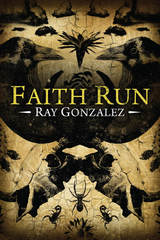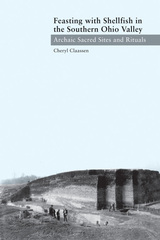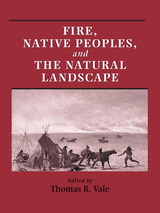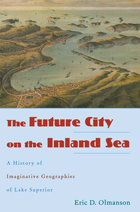4 start with F start with F

For Gonzalez, it seems, we humans can transcend the ordinary—just as these poems transcend genre and create a poetic realm of their own—but we never actually leave behind our rooted, earthbound lives. Although our landscape may be invisible to us, we never escape its powerful magnetism. Nor do we ever abandon our ancestors. No matter how fast or far we run, we can never outrun them. Like gravity, their influence is inexorable.
These poems enchant with their language, which often leaps unexpectedly from worldly to otherworldly in the same stanza, but they cling and linger in our memories—not unlike the voices of friends and relatives.

In this provocative work, Cheryl Claassen challenges long-standing notions n this provocative work, Cheryl Claassen challenges long-standing notions Iabout hunter-gatherer life in the southern Ohio Valley as it unfolded some Iabout hunter-gatherer life in the southern Ohio Valley as it unfolded some I8,000 to 3,500 years ago. Focusing on freshwater shell mounds scattered 8,000 to 3,500 years ago. Focusing on freshwater shell mounds scattered along the Tennessee, Ohio, Green, and Harpeth rivers, Claassen draws on the latest archaeological research to offer penetrating new insights into the sacred world of Archaic peoples. Some of the most striking ideas are that there were no villages in the southern Ohio Valley during the Archaic period, that all of the trading and killing were for ritual purposes, and that body positioning in graves reflects cause of death primarily.
Mid-twentieth-century assessments of the shell mounds saw them as the products of culturally simple societies that cared little about their dead and were concerned only with food. More recent interpretations, while attributing greater complexity to these peoples, have viewed the sites as mere villages and stressed such factors as population growth and climate change in analyzing the way these societies and their practices evolved. Claassen, however, makes a persuasive case that the sites were actually the settings for sacred rituals of burial and
renewal and that their large shell accumulations are evidence of feasts associated with those ceremonies. She argues that the physical evidence—including the location of the sites, the largely undisturbed nature of the deposits, the high incidence of dog burials, the number of tools per body found at the sites, and the indications of human sacrifice and violent death—not only supports this view but reveals how ritual practices developed over time. The seemingly sudden demise of shellfish consumption, Claassen contends, was not due to overharvesting and environmental change; it ended, rather, because the sacred rituals changed.
Feasting with Shellfish in the Southern Ohio Valley is a work bound to stir controversy and debate among scholars of the Archaic period. Just as surely, it will encourage a new appreciation for the spiritual life of ancient peoples—how they thought about the cosmos and the mysterious forces that surrounded them.

For nearly two centuries, the creation myth for the United States imagined European settlers arriving on the shores of a vast, uncharted wilderness. Over the last two decades, however, a contrary vision has emerged, one which sees the country's roots not in a state of "pristine" nature but rather in a "human-modified landscape" over which native peoples exerted vast control.
Fire, Native Peoples, and the Natural Landscape seeks a middle ground between those conflicting paradigms, offering a critical, research-based assessment of the role of Native Americans in modifying the landscapes of pre-European America. Contributors focus on the western United States and look at the question of fire regimes, the single human impact which could have altered the environment at a broad, landscape scale, and which could have been important in almost any part of the West. Each of the seven chapters is written by a different author about a different subregion of the West, evaluating the question of whether the fire regimes extant at the time of European contact were the product of natural factors or whether ignitions by Native Americans fundamentally changed those regimes.
An introductory essay offers context for the regional chapters, and a concluding section compares results from the various regions and highlights patterns both common to the West as a whole and distinctive for various parts of the western states. The final section also relates the findings to policy questions concerning the management of natural areas, particularly on federal lands, and of the "naturalness" of the pre-European western landscape.

Winner of the AAG’s John Brinckerhoff Jackson Prize
Winner of the Great Lakes American Studies Association/Ohio University Press Book Award
Throughout the nineteenth century, the southern shores of Lake Superior held great promise for developers imagining the next great metropolis. These new territories were seen as expanses to be filled, first with romantic visions, then with scientific images, and later with vistas designed to entice settlement and economic development. The Future City on the Inland Sea describes the attempts of explorers under government, commercial, or scientific sponsorship to project their imaginative visions on a region where the future did not happen as planned.
Author Eric D. Olmanson takes a fresh look at the settlements in the vicinity of Chequamegon Bay and the Apostle Islands by analyzing the texts and images left by the missionaries, geologists, ordinance surveyors, newspaper editors, and boosters. The Future City on the Inland Sea shows how new visions of the place absorbed and replaced the old ones, eventually producing what might be called for the first time “a region.”
More than a regional geography, The Future City on the Inland Sea is an appraisal of these early efforts to meld geographies of physical nature with those of human ideals, a demonstration of how thoroughly and paradoxically those two realms are entangled.
READERS
Browse our collection.
PUBLISHERS
See BiblioVault's publisher services.
STUDENT SERVICES
Files for college accessibility offices.
UChicago Accessibility Resources
home | accessibility | search | about | contact us
BiblioVault ® 2001 - 2024
The University of Chicago Press









